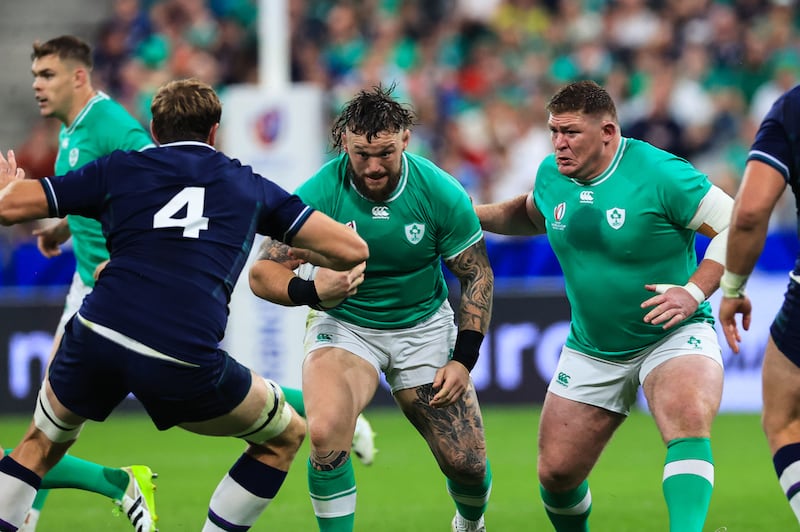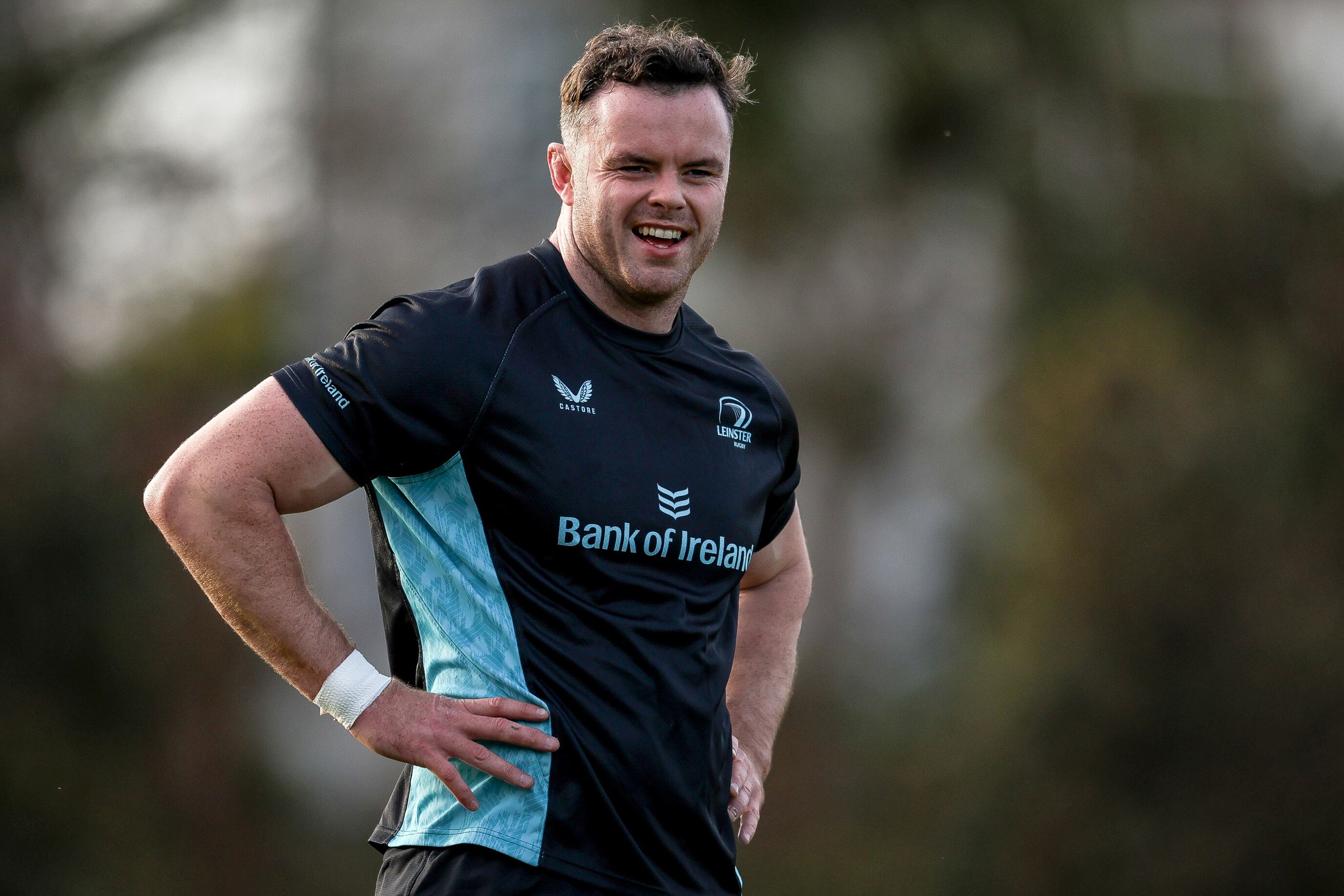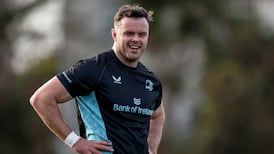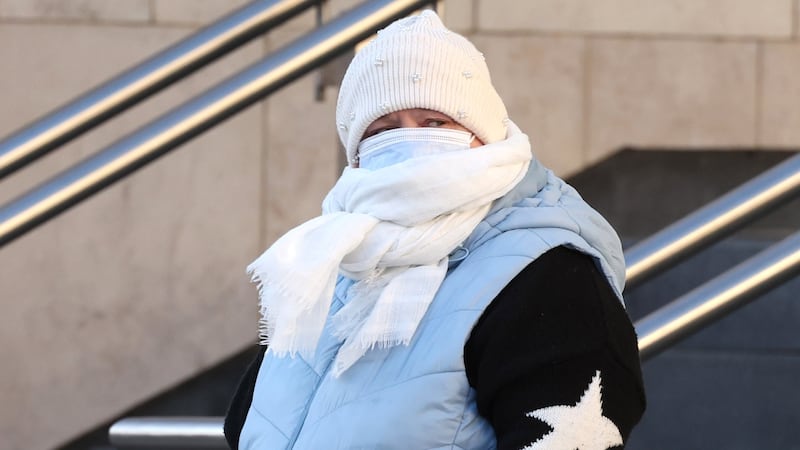Andy Farrell inherited an Ireland squad at a relatively low ebb following the 2019 World Cup in Japan, the culmination of a slow, steady descent from the summit of the previous year, which featured a Six Nations Grand Slam and a November Test victory over New Zealand at the Aviva Stadium.
Few would have anticipated that Joe Schmidt’s Ireland squad, ranked number one in the world, would endure a stuttering 2019 Six Nations. Worse was to follow at the World Cup where defeats to Japan and the All Blacks brought a disappointing conclusion to what had been for several years a very enjoyable and fulfilling period in Test rugby under the New Zealander.
The initial returns under Farrell were modest in terms of the early results but, once ensconced, he quickly put his stamp on the style, content and personnel to brilliant effect, winning a Test series in New Zealand and a Grand Slam. The nature of the World Cup quarter-final defeat to the All Blacks was soul destroying because of the self-inflicted wounds.
The recently appointed Lions head coach now stands at the crossroads, about to embark on a new building phase. Armed with a four-year contract from the IRFU that will take him through the 2027 World Cup in Australia, the first item on the agenda is to fill a few gaps in the Ireland squad left by big name players such as Johnny Sexton and Keith Earls, who added huge value on and off the pitch.
READ MORE
Farrell has proved adept in doing this before. In his first Six Nations in charge, he doled out half a dozen debuts. He moved Tadhg Beirne from a peripheral figure to a frontline fulcrum, integrated Hugo Keenan, Caelan Doris, and Jamison Gibson-Park into the leadership group and in one match alone against the USA in the summer of 2021 gave eight players their first cap.
What is evident with the benefit of hindsight over this period is how players were selected on form and in several cases for their potential, with an eye on a position-specific requirement. The reaction was overwhelmingly positive, which underlines Farrell’s man management skills and his ability to pick people, as much as players, who add value to the squad.
He gave opportunities and as a player you can ask for no more. Once the emphasis shifted from integrating new faces to preparing for the World Cup in France, Farrell stayed fiercely loyal to the wider squad.
There were one or two exceptions whose form demanded consideration but the last window for any sort of change was the Emerging Ireland tour to South Africa. Jack Crowley and Joe McCarthy made the most of that chance to force their way into the coach’s plans.

Today’s Irish squad announcement should hark back to 2020, leaning largely on familiar faces with a nod to form and potential in a few cases. An obvious area of interest will be the injury crisis in the back three, outhalf and the depth chart behind Andrew Porter and Tadhg Furlong.
France in Marseilles is such a difficult opening to the Six Nations but the optimist in me believes that Ireland are in reasonably good shape. One reason sits squarely on the broad shoulders of McCarthy, the young secondrow whose constant improvement week on week has been a feature of this season.
Leinster travel to Leicester this week, where McCarthy will come face to face with two of England’s best young locks in Ollie Chessum and George Martin. A Gregory Alldritt- and Will Skelton-inspired La Rochelle steamrollered Leicester last Sunday but among the very few to stand up to the ferocious physical onslaught were the two young English secondrows.
McCarthy carried extremely well against a poor Stade Français team, his power and footwork helping him to manage the collisions on his terms for the most part. He will receive a more rigorous examination of those qualities at Welford Road, where a good showing will benefit Leinster and also put him within touching distance of a place in the match day 23 in Marseilles.
Ireland are well resourced at secondrow with Beirne, James Ryan and Iain Henderson making up the lion’s share of the combinations. McCarthy and Tom Ahern are likely to be added to that group, and that will create the dilemma that every coach wants, and every player secretly hates. Regardless of how good you are, when young, hungry players are thrown into the mix, you have to respond; it keeps you sharp.
Crowley is in prime position to take the 10 jersey in the post-Sexton era. His range of kicking, his vision and management of the game were impressive in the win over Toulon, and taking the reins on a regular basis should serve him well. That consistency fast-tracks development for those with the aptitude physically and mentally; it can’t be replicated on any training ground.
Players need to play, outhalves even more so, given their pivotal role and how they influence the team. The constant rotation at Leinster, primarily due to injury, where Ross and Harry Byrne, Ciarán Frawley and Sam Prendergast have worn the 10 jersey, has affected Leinster’s attack.
The main creative source for Leinster has been Gibson-Park, who has yet to develop a strong relationship with any of the 10s. The question going to Welford Road is: if the hosts decide to focus on and shut down Gibson-Park, will the Leinster 10 – Ross Byrne is not in contention, Harry Byrne and Frawley are injury doubts – be able to pick up the slack from a creativity perspective?
Leinster do not need to win to progress but will need to do so to get a home draw going forward. The same is true for Munster’s visitors to Thomond Park at the weekend, the Northampton Saints. It will be interesting to see whether the English club travel with a full complement to Munster, who are buoyant following their superb win in the south of France.
Before that today’s Irish squad announcement will provide a bit of spice and motivation, especially for those who have been omitted. They have to challenge Farrell to rethink down the road; doing so in the match arena is always the most persuasive argument.














